
You’re reading Move, the nudge we need to get active, however makes us happiest and healthiest.
Let’s face it, none of us stretch as much as we should. Whether we’re pressed for time or simply can’t be bothered, it’s hard to stop and give our body the TLC it deserves.
Runners or those do HIIT workouts often find flexibility is their downfall. And focusing on improving flexibility takes time, patience and knowledge.
So if there was one stretch we should be doing every day what would it be? We put the question to five personal trainers.
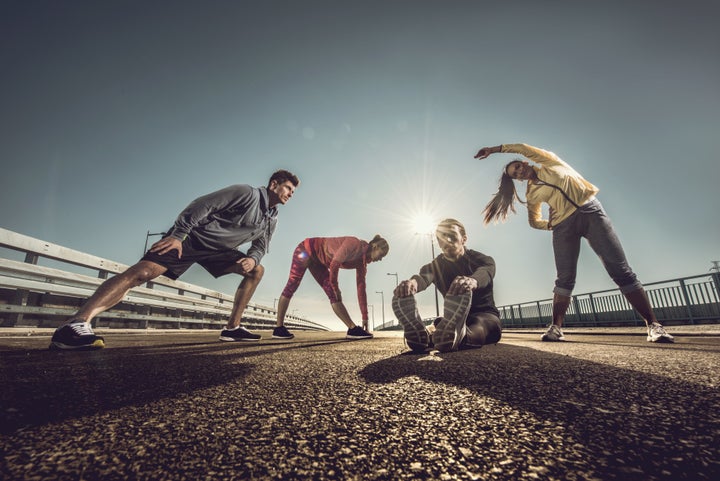
1. Overhead reach in lunge position
Matt Bolam, personal trainer from Speedflex said the minimum threshold of flexibility training you need per week to increase your flexibility is six hours. After this, you can maintain your flexibility with only one hour a week.
Why?
“This stretch mobilises your spine, stretches your chest, activates your core and targets the ankles and hips, areas of the body that tend to be the most restricted. So if you need hip flexor stretches, back stretches, or shoulder stretches, then this is a great place to start.”
How?
“Starting in a low lunge position (right leg forward), keep your right hand near your right instep and rotate your left arm upwards, opening your torso, and reaching over your head until your arm is straight. Both of your arms should form a straight line.
“Return your arm to the starting position and alternate sides. Do six reps on each side.”
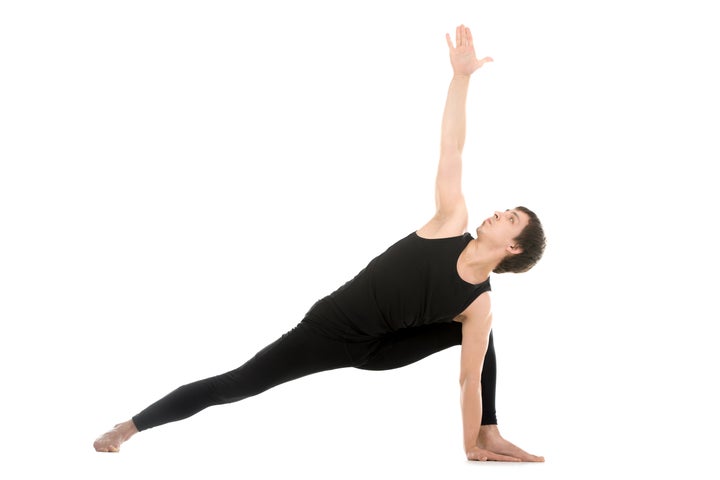
2. Downward dog
Amy Costello, co-owner of F45 Tottenham Court Road studio went for the classic downward dog for a daily, effective, and multi-faceted stretch.
Why?
“When it comes to promoting blood flow throughout the whole body, lengthening the spine through stretching is a great practice to employ daily.
“Immediate effects will come in the form of loosening tight muscles and promoting blood flow, but to experience noticeable improvements in flexibility, you should continue to practice downward dog for a few minutes daily.”
How?
“Begin in a push-up position with your hands planted on the floor directly underneath your shoulders, then drive your bum up towards the ceiling. This pose targets muscles throughout the arms, chest, back, legs, ankles and feet, so is a great starting point for people who experience lots of tightness but have little time.”
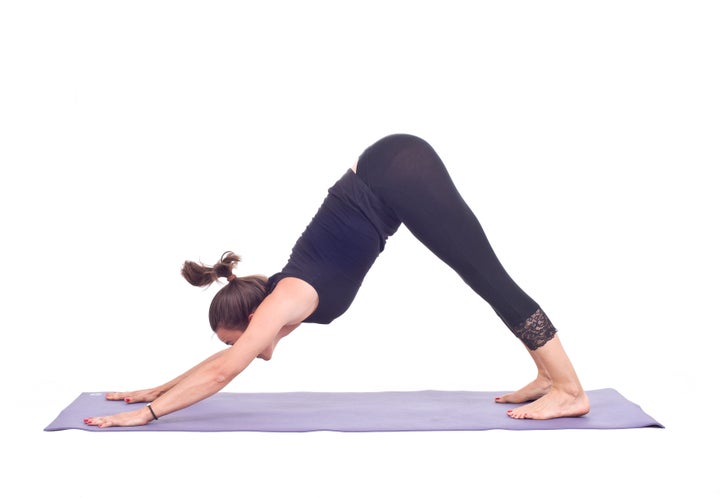
3. Calves stretches
Jonathon Lomax, owner of Lomax Gym, said calves would be the one thing he’d recommend people stretching.
“Foam rolling should also be done as often as possible,” he added.
Why?
“Because calves take on such a critical role in running and cardio mechanics. Your calves require a lot of maintenance: you should regularly stretch the muscles, as well as do specific exercises to strengthen them.”
How?
You should mix up the stretch between static and active and choose one of the below each day to do, once a day.
- Standing straight leg with hands against wall - 30 secs x 3 per leg
- Standing bent leg with hands against wall - 30 secs x 3 per leg
- downward facing dog (feet flat on the floor) - 30 secs x 3 per leg
“On top of this, if you want to add in active stretches, these should be done three times a week.
- Eccentric stretch off a step or block - 30 secs x 3
- Farmers walk on toes (holding heavy dumbbells) - 1 secs x3
- Plyometric jumps - 30 secs x 3.
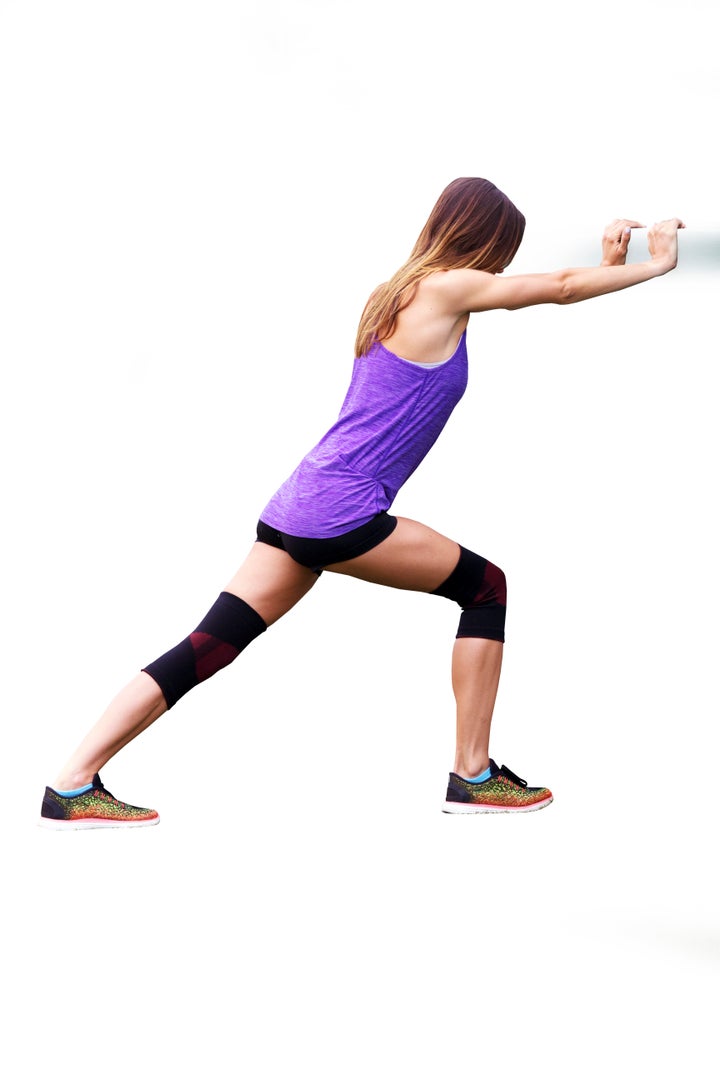
4. Three-part dynamic stretch sequence
Faisal Abdalla, who runs PMA Fitness, decided to put his “one stretch a day” into a three-part dynamic stretch sequence (sneaky). It’s similar to the overhead lunge, but incorporates movement.
Why?
“My favourite stretching sequence is dubbed ‘the world’s greatest stretch’ and if you incorporate it into your routine, you will soon see why.
“It’s a three-part dynamic stretch sequence which can be used as a warm up or whenever you feel you need to loosen up. It hits the three golden areas that you should be looking to mobilise - your hips, ankles and thoracic spine.”
How?
“1. From a standing position, walk your hands out into a plank position, keeping your legs as straight as possible. Step your left leg forward and place it outside your left hand. Hold.
“2. With your left hand inside your left foot, reach up to the sky with your right hand and hold. Repeat the movement 10 times by sweeping your hand down, under the right side of your body, and back up to the sky again.
“3. Place your left hand back on the outside of your left foot and rock your body back so that your left leg is straight. Return to your plank position and repeat on the opposite side.”
4. Pigeon stretch
David Kingsbury, who specialises in muscle symmetry, postural control and core strength at OPUS Fitness said people should do the pigeon stretch.
Why?
“This stretch will target the gluteal group of muscles. It’s particularly good for stretching the piriformis (a small muscle in the buttock which contributes to hip rotation).
“Tight hips and impaired movement capability are closely associated to people at both ends of the activity spectrum.”
How?
“I would begin by holding this stretch for between one to three minutes on each side, up to twice per day.
“It is important that the knee angle remains open to around 90 degrees to avoid over stressing the joint. The benefits of improving the flexibility of the hips include increased training capacity (e.g. deeper squats) and improved flexibility.”
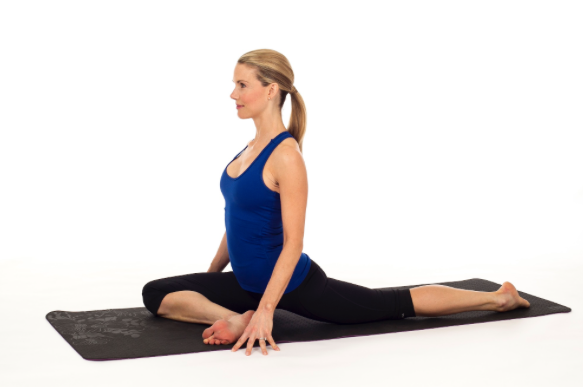
Move celebrates exercise in all its forms, with accessible features encouraging you to add movement into your day – because it’s not just good for the body, but the mind, too. We get it: workouts can be a bit of a slog, but there are ways you can move more without dreading it. Whether you love hikes, bike rides, YouTube workouts or hula hoop routines, exercise should be something to enjoy.

